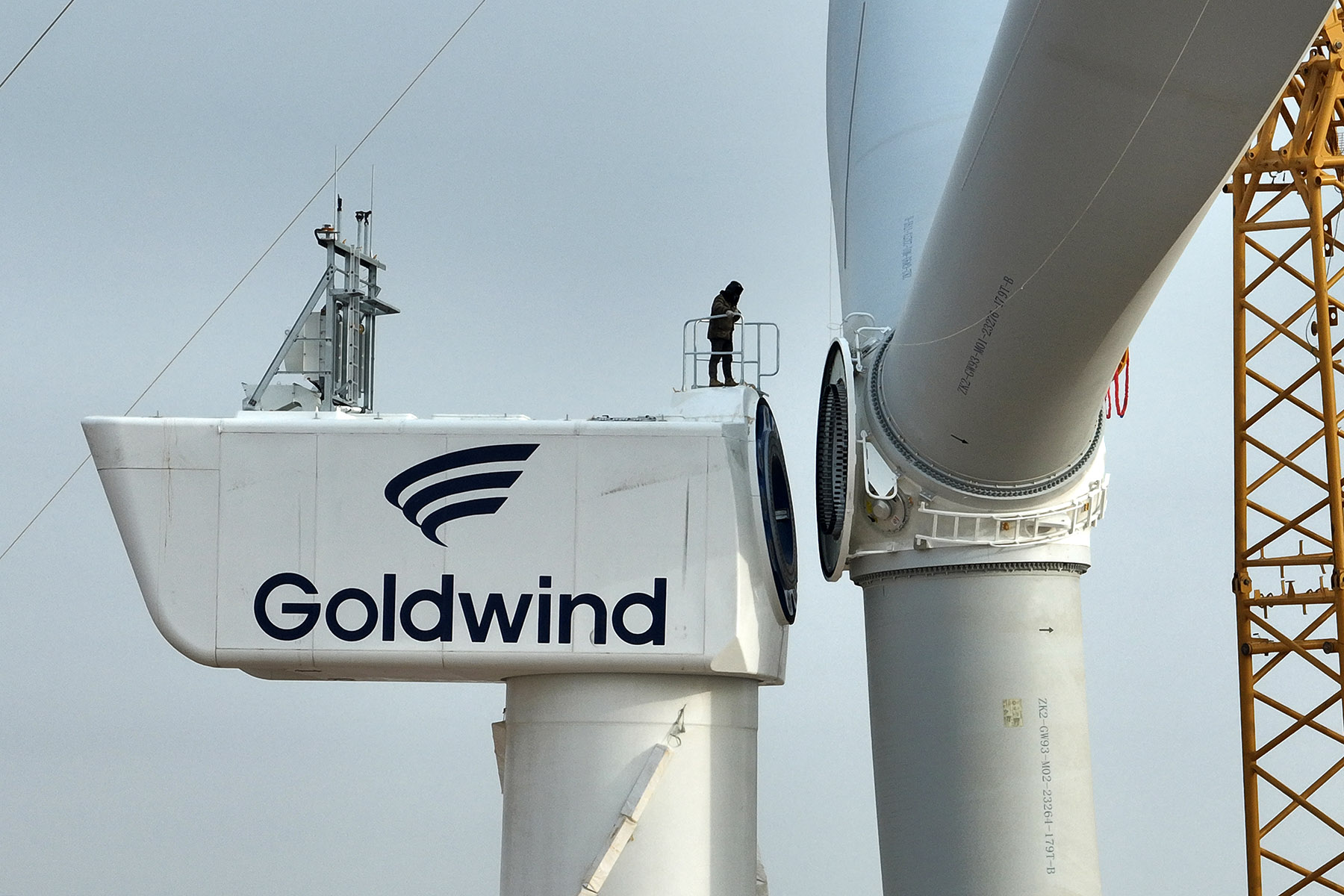NEA move to tap abundant energy source, scattered land mass to help low-carbon future

China's rural areas are gearing up for a wind energy boom on a comprehensive utilization plan for the renewable power source, which is expected to further boost the development of clean energy in the nation.
The National Energy Administration has recently put in place a plan to further promote wind power in rural regions. This is an attempt to take advantage of the abundant and widely distributed wind energy resources, fully utilize scattered land in these regions and facilitate the green and low-carbon transformation of rural energy.
The administration encourages joint investment in small-scale wind projects in rural areas by wind power enterprises and local governments and emphasizes the importance of farmers increasing their income through the initiative.
READ MORE: Integrated project crucial in green power leap
The grid-connected price of electricity will be based on the current year's policy for grid-connected new energy electricity prices, it said.
While wind power development in China has been mainly focused on large-scale projects in western regions, including Xizang autonomous region, Ningxia Hui autonomous region and Inner Mongolia autonomous region, the initiative opens up new market space for wind power in the country, said the administration.
It will also play a role in promoting development, expanding investment and stabilizing growth, said Wang Dapeng, deputy head of the new energy and renewable energy department at the NEA.
"Calculating based on the industry's general expected rate of return of 6 percent to 8 percent, a 3 to 4-megawatt wind turbine can generate an additional income of 50,000 yuan ($6,900) to 100,000 yuan per year for the village collective," said Wang.
"Further integration of rural wind power with distributed photovoltaics and biomass power generation in China's countryside will help adjust the rural energy structure, promote rural energy revolution, and contribute to achieving the country's dual-carbon goals."
The initiative will drive the growth and expansion of related industrial clusters such as wind power equipment manufacturing, installation, and operation and maintenance, while also improving related supporting industries such as smart grids and energy storage technologies, said Qin Haiyan, secretary-general of the Chinese Wind Energy Association.
The wind power industry will usher in broader development opportunities, Qin added.
"China's ambition to step up wind power in its rural regions will lead the wind power industry to explore a new development path beyond large-scale turbines, large bases and centralized systems," the industry insider said.
"China possesses abundant wind energy resources distributed widely across the country. With breakthroughs in low wind speed technology, most regions, particularly the central, eastern, and southern areas which have relatively lower wind speeds, are now equipped with development conditions with potential resources available for development exceeding 3 billion kilowatts."
Qin said several rural regions in China are facing high electricity prices while lacking the land resources to develop large-scale wind power plants, which makes utilization of distributed wind power an important way to achieve the country's goal of carbon peak before 2030.

Immense potential
Solar power has already gained ground in China's rural regions over the past few years, and has led to savings in rural communities by replacing expensive and inefficient traditional fuels.
China's rural regions, encompassing over 90 percent of the nation's total land area, hold immense potential for the development of rural renewable energies. According to a guideline underpinning green development in urban and rural areas released by the State Council, China's Cabinet, green development will cover urban and rural areas comprehensively by 2035, with an increased cut in carbon emissions.
Qin said it is necessary for wind farms to be located near the source of power consumption. He also highlighted the importance of local grid operators to ensure wind power grid connection, with a focus on local and nearby consumption.
"Compared with cities, China's rural areas have more empty spaces to install wind power systems at lower costs," said Lin Boqiang, head of the China Institute for Studies in Energy Policy at Xiamen University.
"Since the development of distributed wind power in rural areas also leads to extra earnings for residents and helps reduce power expenses, local governments and power supply companies should continue to simplify processes to better tap the potential of distributed wind power in China's rural regions as long as it is legal, compliant and beneficial to the industry."
According to the Chinese Wind Energy Association, there are now approximately 690,000 administrative villages nationwide. Four 5-mW turbines on scattered land such as fields, village outskirts, and rural roads in 100,000 villages could lead to a wind power installed capacity of 2 billion kW, it said.
Currently, wind power development in China is primarily focused on large-scale projects, and the development of distributed wind power is slow, which restricts the market space for wind power in the country, it said.
According to Lin, energy demand in rural regions has been surging in recent years thanks to demand for heating in winter, accelerated modernization of agriculture and improved mechanization levels in agriculture.
"During the implementation of the rural vitalization strategy, new energy has been emerging as a significant driving force, with wind power showing great potential," he said.
"The initiative, along with the integration of distributed photovoltaics, biomass power generation, geothermal energy, and other renewable energy sources, can adjust the rural energy structure, promote the rural energy revolution and contribute to achieving carbon peak and neutrality goals."
In rural areas of China, wind energy resources are abundant and widely distributed. By fully utilizing scattered land in rural areas and promoting the development and utilization of wind power according to local conditions, it can significantly contribute to boosting the collective economy of villages and achieving the significant goals of carbon peak and neutrality, he added.
ALSO READ: Solar's bright future in powering China's rural areas
Li Fei, vice-president of domestic turbine maker Xinjiang Goldwind Science & Technology Co Ltd, said in addition to promoting the green and low-carbon transformation of rural energy, the measures are also likely to benefit wind developers and turbine manufacturers in the country.
Goldwind said the expansion of distributed wind power in China's rural regions will bring broader development opportunities for the wind power industry.
However, considering the high construction costs, strict grid connection requirements, and various environmental limitations, the initiative sets a higher threshold for wind power technology and it is necessary that the companies ensure returns are predictable, Li said.
Therefore, it is essential to actively promote the integration of source, grid, load and storage, which will take in excess power from renewables when demand declines, and enable renewable facilities to function more like traditional power plants, he added.


